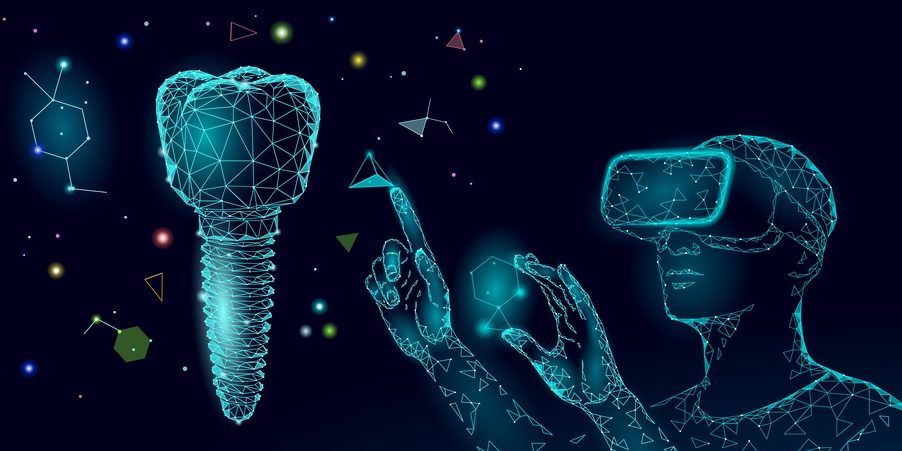Dentistry is one of humanity’s oldest medical practices, dating back to the Indus Valley in 7000 B.C. Naturally, there have been many developments and improvements over time. In recent decades, innovative technology has accelerated dental practices exponentially.
Rapid advancements in artificial intelligence are changing the world at a startling rate, and the applied practices in modern dentistry have proven highly effective at supporting dental professionals in their roles.
What Is Artificial Intelligence?
Artificial intelligence is a branch of science that deals with the engineering of automated processes, pattern recognition, and computer algorithms. Most commonly, it is associated with software and the interpretation of data.
Machine Learning
Machine learning refers to a type of artificial intelligence that uses historical input to predict outcomes without needing to be specifically programmed to do so. This science relies heavily on pattern recognition and data analysis and the implementation of various algorithms. Everyday examples of machine learning include:
- “Watch next” suggestions on video streaming platforms, such as Netflix or YouTube
- Commute estimations and traffic alerts, like when using Google Maps
- Friend suggestions on social media platforms
- Image and voice recognition
Deep Learning
Deep learning is a subset of machine learning that focuses on teaching computers how to learn by example.
Here are some ways we see deep learning used in day-to-day life:
- Self-driving vehicles
- Voice control for speakers, smartphones, and hands-free devices
- Chatbots
- Virtual assistants
CNNs in Diagnostic Imaging
One issue that dental professionals face is the overwhelming amount of data that can result from diagnostic imaging. Radiography and intraoral scans produce data that is unstructured and time-consuming to process.
Machine learning is already being used in the automated interpretation of MRI scan results and cone-beam computed tomography, or CBCT. Cone-beam computed tomography refers to a type of x-ray that rotates around the patient, capturing images of the underlying bone structure in a patient’s mouth.
Convolutional neural networks, or CNNs, are a type of image processing artificial intelligence that is modeled after the neural networks in the human brain. CNNs process pixel data to perform descriptive tasks used in image recognition.
The CNN technology in artificial intelligence is currently outperforming dental professionals in detecting tooth decay and predicting the type of treatment best suited for various dental ailments.
Detecting and Diagnosing Dental Caries
Traditionally, dental caries- perhaps better known as cavities- have been diagnosed by a dentist simply peering into your mouth and viewing them with the naked eye. Now, however, artificial intelligence is being used to identify oral decay using CBCT results. This means that cavities can be diagnosed and treated at a much earlier stage, preventing progressive damage, and significantly reducing the cost and scope of treatment.
Other Applications
Artificial intelligence is also being applied to detect oral lesions and periodontal diseases and to assist in the diagnosis of oral cancers. Due to the improved recognition capabilities and patterns of accurate prediction, these technologies have been highly effective in assisting in treatment planning and implementing corrective dental procedures.
While it isn’t likely that a robot will be replacing your dentist any time soon, artificial intelligence is reshaping the landscape of dentistry in groundbreaking ways. Thanks to these technologies, the future of dentistry looks brighter than ever.







